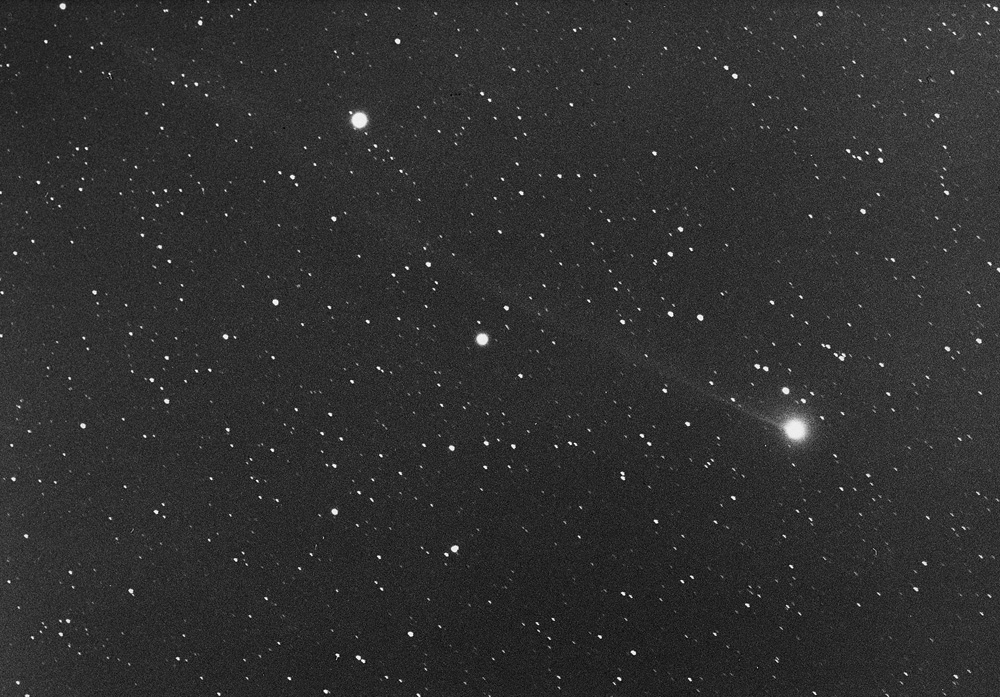
Perihelion: 2020 June 25.85, q = 0.337 AU
In the early 19th Century the idea that comets might return to the inner solar system on a regular basis was still a bit of a novelty. This had been successfully demonstrated by the British astronomer Edmond Halley when the comet that now bears his name returned in 1758-59 – the story of which is recounted in a previous “Special Topics” presentation – but even though the astronomers and mathematicians of the time were able to calculate the orbits of comets, no other examples of a returning comet were known.
This changed in 1819 when the German mathematician Johann Encke set about calculating the orbit of a comet that had been discovered in November 1818 by the French astronomer Jean Louis Pons (who was one of the most prolific comet discoverers in history). Encke found that the positional measurements of Pons’ comet were best fit by a short-period elliptical orbit, and then noticed a similarity to comets that had been observed during the recent past. The first of these was discovered on January 17, 1786 by the French astronomer Pierre Mechain, although this particular comet was only observed on two nights and no reliable orbit could be calculated for it. A second comet was discovered in November 1795 by Caroline Herschel in England – the sister of astronomer, and discoverer of Uranus, William Herschel, and an accomplished astronomer in her own right – which was followed for the next three weeks. A third comet was discovered in October 1805 by none other than Pons himself, and was followed for one month. Encke determined that all four of these comets were in fact the same object, and calculated an orbital period of only 3.3 years. He then predicted that the comet would next pass perihelion during the latter part of May 1822, and on June 2 of that year it was successfully recovered by German astronomer Carl Rumker (who was observing from Paramatta Observatory in New South Wales) quite close to Encke’s predicted location. The comet was subsequently named in Encke’s honor.
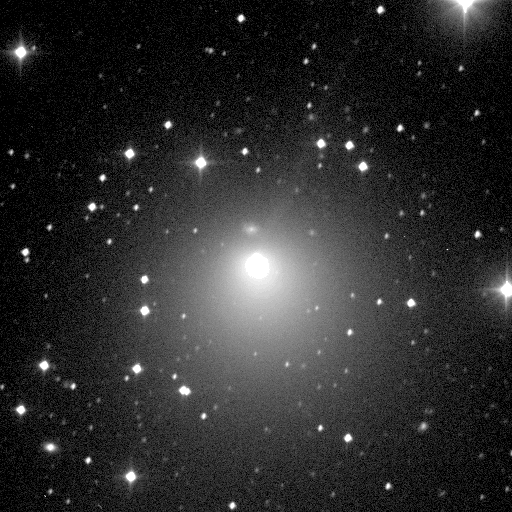
Encke’s Comet still has the distinction of being the comet with the shortest known orbital period, although a handful of “active asteroids” (discussed in a future “Special Topics” presentation) have shorter periods. It has been observed on every return since that of 1822, with the exception of the return in 1944 when the viewing geometry was very unfavorable and moreover the world’s astronomers were preoccupied with World War II. This year’s return is the 64th at which it has been observed, and I have personally observed it on 12 returns going back to that of 1971. Perhaps not too surprisingly, it has faded some over the two centuries that we have been following it; while it was a naked-eye object of 4th or 5th magnitude during some of its early returns, over the past few decades it has not become brighter than about 7th magnitude.
Being as frequent and well-observed a visitor as it is, Comet Encke has played a significant role in our overall understanding of comets. Encke himself noticed that, even after allowing for gravitational perturbations by all the known planets, his comet was returning to perihelion a few hours earlier at each return, and to account for this he proposed a “resisting medium” in the solar system that was slowing it down and pushing it into a smaller orbit. A handful of additional comets also exhibited this same phenomenon, however in the 1930s a couple of comets were found to be exhibiting the opposite effect – the opposite of what a “resisting medium” would do. It was in significant part an attempt to account for this that Fred Whipple wrote and published his landmark 1950 paper – which was in fact subtitled “The Acceleration of Comet Encke” – wherein he proposed the “icy conglomerate” (or “dirty snowball”) model for a cometary nucleus that has since been verified. (This history is discussed in more detail in a previous “Special Topics” presentation.) This acceleration that Comet Encke exhibits is now described under the term “non-gravitational forces” and is the result of material being ejected off the nucleus and acting in the manner of a rocket engine.
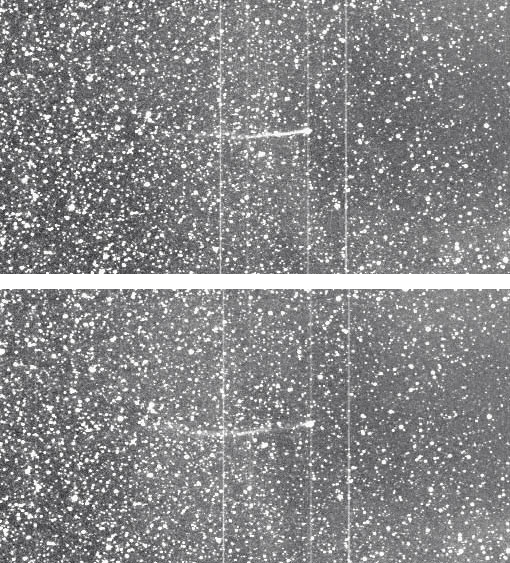
More recently, on December 12, 1970 Comet Encke was examined with the Orbiting Geophysical Observatory 5 (OGO-5) satellite, which detected a Lyman-alpha hydrogen cloud a few hundred thousand km across surrounding the coma. This was only the third comet, and the first comet of short period, to be found to be accompanied by such a cloud, and this provided strong evidence – now verified – that such clouds accompany almost all comets that visit the inner solar system. Three returns later, in November 1980 MIT student Paul Kamoun utilized the giant 300-meter Arecibo radio telescope in Puerto Rico to transmit and receive radar signals to and from Comet Encke – the first successful radar detection of a comet. The return signals indicated that the comet’s nucleus is approximately seven km in diameter (although the “true” size is now known to be closer to five km). The mere fact that a solid nucleus was detected provided a strong form of supporting evidence for Fred Whipple’s “icy conglomerate” model. Five returns after that, on July 4, 1997, while outbound from perihelion passage Comet Encke passed 0.190 AU from Earth, the closest it has come to our planet since its original discovery, and the closest approach it will make until June 2172 (approach distance 0.174 AU).
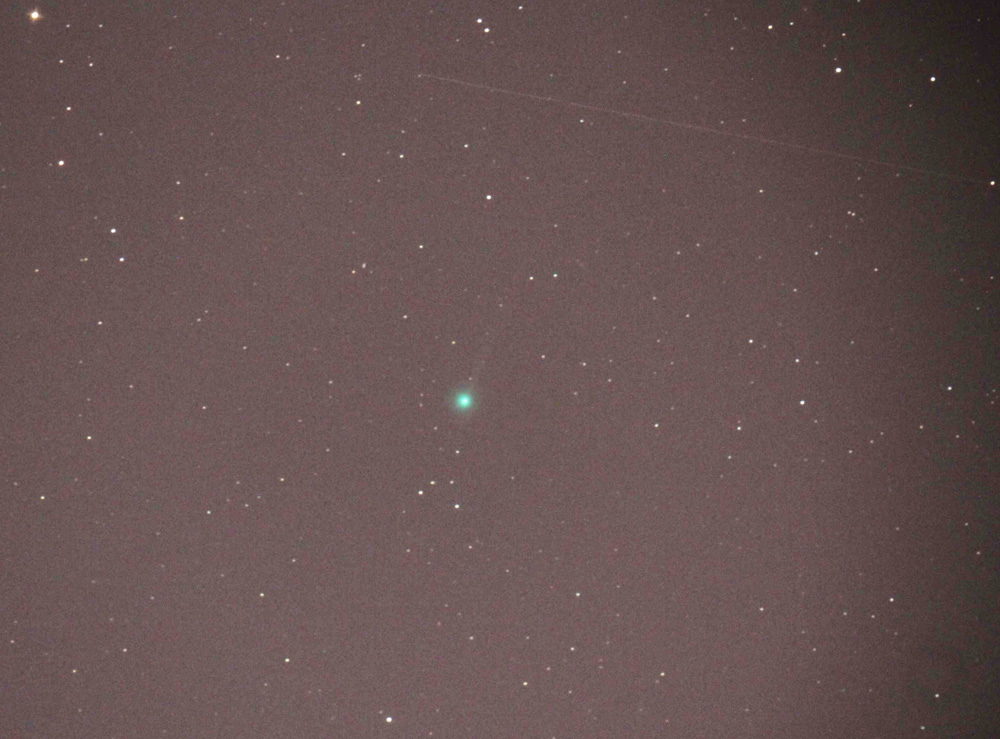
There is some evidence that Comet Encke was once part of a much larger object that has largely broken up over the past few tens of millennia. The Taurid meteor shower – actually two separate showers, one that peaks around October 10 and the other which peaks around November 12, and both of which are spread out over several weeks and have low rates of 5 to 10 meteors per hour – and a stronger daytime Beta Taurid meteor shower that peaks near the end of June, appear to be associated with Comet Encke, as do several near-Earth asteroids and possibly the object that produced the Tunguska impact event in June 1908 (discussed in next week’s “Special Topics” presentation). The densest part of this “Taurid stream” was predicted to pass close to Earth in mid-2019, but despite careful searches no unusual objects or phenomena appear to have been detected.
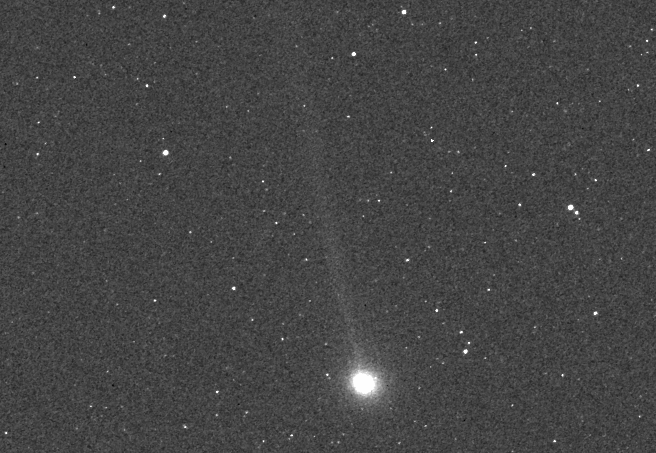
Comet Encke was photographed when near aphelion in 1972 (following its perihelion passage early the previous year) and thus is now followed all the way around its orbit. Following its most recent perihelion passage in March 2017 it went through aphelion (heliocentric distance 4.09 AU) in early November 2018 and was imaged just a few days later as a 20th-magnitude object by a German amateur astronomer, Werner Hasubick. On the present return it has approached perihelion from behind the sun and has been in sunlight for the past several months; perhaps somewhat surprisingly, it did not become bright enough to detect while in the field of view of the LASCO C3 coronagraph aboard SOHO. Shortly after the beginning of July it should become visible in the evening sky in the constellation Cancer and over the next few weeks it tracks to the east-southeast through the constellations of Hydra, Sextans, Crater, and Corvus. It may be as bright as 7th magnitude when it first appears but should fade rapidly and grow very diffuse while doing so, and will likely become undetectable visually within about a month or so. Because the comet remains at a fairly small elongation south of the sun throughout this time it will be visible only from the southern hemisphere; those of us in the northern hemisphere miss out completely.
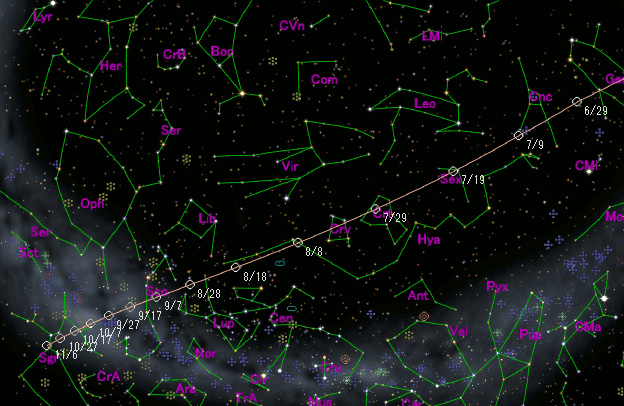
The northern hemisphere should get its chance during the next return, in 2023 (perihelion October 22). The comet should come within visual range by late August or early September when it will be conveniently placed in the morning sky in the constellation Auriga, and over the next six weeks, it tracks towards the east-southeast through Gemini, Cancer, and Leo. By the time it disappears into morning twilight shortly before mid-October, it may be close to 7th magnitude.
More from Week 26:
This Week in History Special Topic Free PDF Download Glossary
Ice and Stone 2020 Home Page


